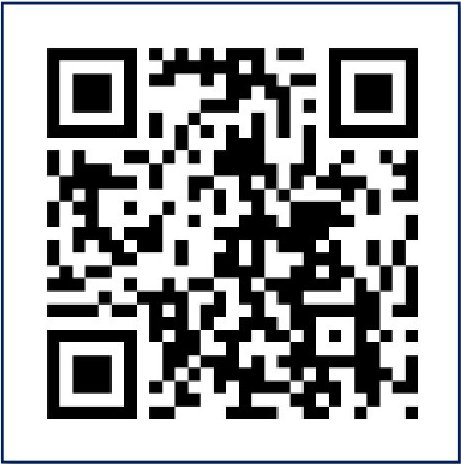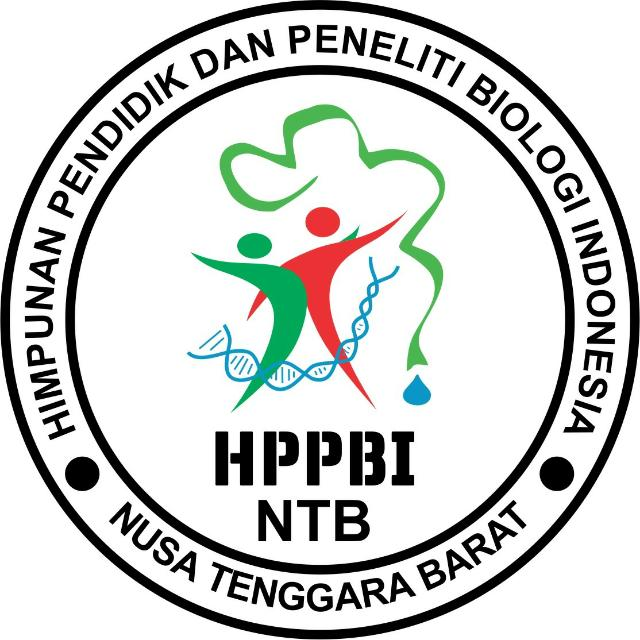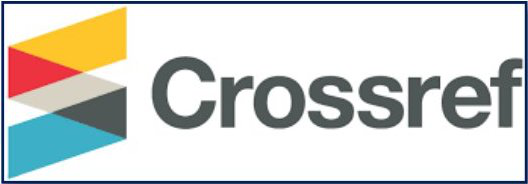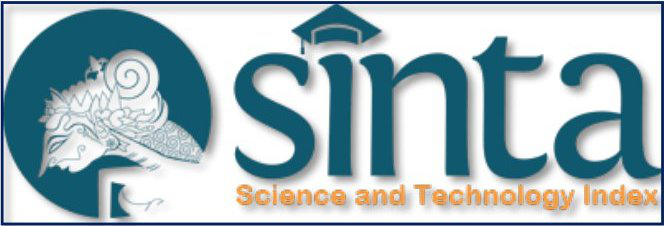Antioxidant Levels, Chlorophyll, Carotenoids, and Antibacterial Activities of Caulerpa lentillifera From The North Coast of Java and Bali
Abstract
This study aims to determine the effect of caulerpa habitat location on the content of active compounds and their activities as antibacterial. This research is experimental and data analysis with ANOVA. Samples come from three different locations of CBL, CBB, and CL as well as two different solvents, ethanol and n-hexane. According to research, the highest antioxidant activity produced by n-hexane CBL is 73.48%. The highest value of phenol gives n-hexane CBB at 292,867 mg/mL. The highest total flavonoids are 11.91 mg/ml produced by CBB ethanol. The total chlorophyll is between 0.25–0.87 mg/mL, while the total carotenoid is between 1.40–4.11 µ mol/L. The clear zone is formed in only 2 samples with S-test bacteria. It has 0.5 mm aureus n-hexane CBB and 1.5 mm n-hexane CL. This zone is clearly classified as very small, this can be due to the small content of the extract in the test sample. Active compounds found under the GCMS test are alkanes, alkenes, alcohols, and other fatty acids. These active compounds are a group of potentially antioxidant and antibacterial agents. It can be inferred that habitat location affects active compounds and CBB has greater potential as a source of natural materials than other samples.
Keywords
Full Text:
PDFReferences
Abdelfatah, H., Elrayes, R., Said, M. M., & Elsihawy, H. A. (2023). Naphthalene: An overview. Records of Pharmaceutical and Biomedical Sciences, 7(1), 145–153.
Adaikalaraj, G., Pathric, R. D., Johnson, M., Janakiraman, N., & Babu, A. (2012). Antibacterial potential of selected red seaweeds from Manapad coastal areas, Thoothukudi, Tamil Nadu, India. Asian Pacific Journal of Tropical Biomedicine, 2(2), S1077–S1080.
Adesalu, T. A., Temenu, T. O., & Julius, M. L. (2016). Molecular characterization, lipid analysis and GC-MS determination of bioactive compounds identified in a West African strain of the green alga Oedogonium (Chlorophyta). Journal of Pharmacognosy and Phytochemistry, 5(6), 1–6.
Alamsyah, R. (2016). Kesesuaian parameter kualitas air untuk budidaya rumput laut di Desa Panaikang Kabupaten Sinjai. Jurnal Agrominansia, 1(2), 61–70.
Andriyana, M., Asfirizal, V., & Yani, S. (2021). Uji daya hambat ekstrak etanol daun tigaron (Crateva religiosa G. Forst) terhadap pertumbuhan bakteri Streptococcus mutan dan Phorphyromonas gingivalis secara in vitro. Mulawarman Dental Journal, 1(2), 40–47.
Apriliyanti, F. J., Cokrowati, N., & Diniarti, N. (2021). Growth of Caulerpa sp. in the cultivation of basic patch system in Rompo Village, Langgudu District. Indonesian Journal of Aquaculture Medium, 1(1), 11–20.
Ardiansyah, F., Pranggono, H., & Madusari, B. D. (2020). Efisiensi pertumbuhan rumput laut Caulerpa sp. dengan perbedaan jarak tanam di tambak cage culture. Jurnal Pena, 34(2), 74–82.
Arifin, B., & Ibrahim, S. (2018). Struktur, bioaktivitas dan antioksidan flavonoid. Jurnal Zarah, 6(1), 21–29.
Arimbawa, I. K. S., Nugraha, I. N. P., & Dantes, K. R. (2019). Analisis pengaruh campuran bahan bakar pertalite dengan naphthalene terhadap konsumsi bahan bakar, torsi dan daya pada sepeda motor 4 langkah. Jurnal Pendidikan Teknik Mesin Undiksha, 7(1), 1–6.
Arista, P. C., Kawuri, R., & Darmayasa, I. B. G. (2020). Potensi ekstrak daun dewandaru (Eugenia uniflora L.) sebagai pengendali bakteri Bacillus cereus ATCC 11778 penyebab diare. Metamorfosa: Journal of Biological Sciences, 7(1), 16.
Ersan, R. H., Yuksel, A., Bolleli, T. E., Dogen, A., Burmaoglu, S., & Algul, O. J. S. (2021). One pot synthesis of novel benzimidazoles with a naphthalene moiety as antimicrobial agents and molecular docking studies. Journal of the Serbian Chemical Society, 68(2), 374–383.
Fakhrulddin, I. M., Harah, Z. M., Shiamala, R. D., & Azrie, A. M. (2021). Effect of salinity, light and fertilizer on Caulerpa lentillifera under culture conditions. Proceedings of the 8th International Conference on Advanced Materials Engineering and Technology, 1–5.
Farasat, M., Khavari-Nejad, R. A., Nabavi, S. M., & Namjooyan, F. (2014). Antioxidant activity, total phenolics and flavonoid contents of some edible green seaweeds from northern coasts of the Persian Gulf. Iranian Journal of Pharmaceutical Research, 13, 163–170.
Firda, H., Junaidi, M., & Setyono, B. D. H. (2022). The effect of harvesting on the production and antioxidant activity of sea grape (Caulerpa racemosa) by rigid quadrant nets planting method. Indonesian Journal of Aquaculture Medium, 2(1), 54–64.
Firdaus, N. P., Diniarti, N., & Scabra, A. R. (2022). Pengaruh berat bibit berbeda pada budidaya Caulerpa sp. dengan metode patok dasar di Desa Gerupuk Kecamatan Pujut Kabupaten Lombok Tengah. Journal of Marine Research, 1–9.
Gazali, M., Nurjanah, Zamani, N. P., Zuriat, Suriani, M., Alfitrah, R., Syafitri, R., Hanum, Z., Zurba, N., Febrina, C. D., & Chermahini, S. H. (2022). Antioxidant activity of green seaweed Caulerpa racemosa (Försskal) J. Agardh from Balai Island water, Aceh. IOP Conference Series: Earth and Environmental Science, 1–14.
Ghanbari, M. A. T., Asgari, A., Bakshi, M., & Babaeizad, V. (2023). Bioactive potential and GC-MS fingerprinting of extracts from endophytic fungi associated with seeds of some medicinal plants. Mycologia Iranica, 10(1), 55–67.
Gharari, Z., Bagheri, K.H., Danafar, H., & Sharafi, A. (2019). Essential oil composition of two Scutellaria species from Iran. Journal of Traditional Chinese Medical Sciences, 6, 244–253.
Goksen, G. (2023). Elucidation and quantification health promoting phenolic compounds, antioxidant properties and sugar levels of ultrasound assisted extraction, aroma compositions and amino acids profiles of macroalgae, Laurencia papillosa. Ultrasonics Sonochemistry, 98, 106527.
Guo, X., Jiang, X., Chen, K., Liang, Q., Zhang, S., Zheng, J., Ma, X., Jiang, H., Wu, H., & Tong, Q. (2024). The role of palmitoleic acid in regulating hepatic gluconeogenesis through SIRT3 in obese mice. Nutrients, 1–18.
Hamzah, F., Agustiadi, T., Trenggono, M., Susilo, E., & Triyulianti, I. (2022). Alternatif pengukuran konsentrasi oksigen terlarut di Laut Indonesia bagian barat pada Muson Tenggara. Jurnal Ilmu dan Teknologi Kelautan Tropis, 14(3), 405–425.
Hendy, N. H., Indriyanti, R., & Gartika, M. (2020). Daya antibakteri asam palmitat bawang putih (Allium sativum) terhadap Streptococcus mutans ATCC 25175. Padjadjaran Journal of Dental Researcher and Students, 4(2), 109–114.
Ivanova, E. P., Nguyen, S. H., Guo, Y., Bauin, V. A., Webb, H. K., Truong, V. K., & Crawford, R. J. (2017). Bactericidal activity of self-assembled palmitic and stearic fatty acid crystals on highly ordered pyrolitic graphite. Acta Biomaterialia, 59(1), 148–157.
Januar, H. I., Wikanta, T., & Hastarini, E. (2004). Hubungan antara musim dengan kadar caulerpin dalam Caulerpa racemosa. Jurnal Penelitian Perikanan Indonesia, 10(3), 1–6.
Jawetz, Melnick, & Adelberg. (2012). Mikrobiologi Kedokteran (Edisi ke-23). Jakarta: EGC.
Junairiah, J., Amalia, N. S., Manuhara, Y. S. W., Matuzaroh, N., & Sulistyorini, L. (2019). Pengaruh variasi zat pengatur tumbuh IAA, BAP, kinetin terhadap metabolit sekunder kalus sirih hitam (Piper betle L. Var Nigra). Jurnal Ilmiah, 4(2), 121–132.
Kamal, C., & Sethuraman, M. G. (2012). Caulerpin—a bis-indole alkaloid as a green inhibitor for the corrosion of mild steel in 1 M HCl solution from the marine alga Caulerpa racemosa. Industrial and Engineering Chemistry Research, 51, 10399–10407.
Kamernaska, Z., Ivanova, A., Stancheva, R., Stoyneva, M., Stefanov, K., Konaklieva, S. D., & Popov, S. (2006). Volatile compounds from some Black Sea red algae and their chemotaxonomic application. Botanica Marina, 49, 27–56.
Kandhasamy, M., & Arunachalam, K. D. (2008). Evaluation of in-vitro antibacterial property of seaweeds of Southeast Coast of India. African Journal of Biotechnology, 7(12), 1958–1961.
Kenedi, J., Hadijah, & Dahlifa. (2023). Studi penyebaran anggur laut Caulerpa racemosa di perairan Kabupaten Takalar. Journal of Aquaculture Environment, 6(1), 49–54.
Koodkaew, I., Pitakwongsaporn, S., Jarussophon, N., & Wichachucherd, B. (2024). Chemical profile, antioxidant activity and α-glucosidase inhibition of sea grape Caulerpa lentillifera collected from different sites in Thailand. Trends in Sciences, 21(4), 7520.
Kusmawati, Diana, I. F., & Humaira, L. (2018). Studi kualitas air budidaya latoh (Caulerpa racemosa) di perairan Lhok Bubon Kecamatan Samatiga Kabupaten Aceh Barat. Jurnal Akuakultura, 2(1), 33–43.
Lee, S. H., & Jeon, Y. J. (2013). Anti-diabetic effects of brown algae derived phlorotannins, marine polyphenols through diverse mechanisms. Fitoterapia, 86, 129–136.
Li, L., Lei, M., Xie, Y., Ill, H. F. S., Chen, B., & Hoffmann, R. (2017). Stabilizing a different cyclooctatetraene stereoisomer. Journal of the American Chemical Society, 114(37), 9803–9808.
Mahfudh, I., Santosa, G. W., & Pramesti, R. (2021). Stabilitas ekstrak klorofil Caulerpa racemosa (Forsskal) J. Agardh 1873 pada suhu dan lama penyimpanan yang berbeda. Journal of Marine Research, 10(2), 184–189.
Maisarah, M., Chatri, M., Advinda, L., & Violita. (2023). Characteristics and functions of alkaloid compounds as antifungals in plants. Serambi Biologi, 8(2), 231–236.
Makar, S., Saha, T., & Singh, S. K. J. E. (2019). Naphthalene, a versatile platform in medicinal chemistry: Sky high perspective. European Journal of Medicinal Chemistry, 161, 252–276.
Marraskuranto, E., Nursid, M., Utami, S., Setyaningsih, I., & Tarman, K. (2021). Kandungan fitokimia, potensi antibakteri, dan antioksidan hasil ekstraksi Caulerpa racemosa dengan pelarut berbeda. JPB Kelautan dan Perikanan, 16(1), 1–10.
Matanjun, P., Mohamed, S., Mustapha, N. M., & Muhammad, K. (2008). Nutrient content of tropical edible seaweeds, Eucheuma cottonii, Caulerpa lentillifera and Sargassum polycystum. Journal of Applied Phycology, 21, 75–80.
Minsas, S., Nanda, A. R., Nurdiansyah, S. I., Idiawati, N., & Siregar, S. (2023). Kandungan klorofil-a dan karotenoid pada Eucheuma cottonii yang dibudidayakan kedalaman berbeda di Teluk Cina Pulau Lemukutan. Jurnal Kelautan Tropis, 26(2), 369–376.
Montolalu, L. A. D. Y., Dotulong, A. R., Ibrahim, Y. M. M., Djumurudi, S. L., Dotulong, V., Damongilala, L. J., & Harikedua, S. D. (2019). Antibacterial activity and phytochemical of Caulerpa sertularioides and Padina australis from Nain Island, North Sulawesi, Indonesia. Bacterial Empire, 2(4), 96–98.
Mustofa, A. (2019). Sebaran kandungan oksigen terlarut perairan pantai sebagai daya dukung usaha tambak di Kabupaten Jepara. Jurnal Disprotek, 10(2), 95–100.
Nagaraj, S. R., & Osborne, J. W. (2014). Bioactive compounds from Caulerpa racemosa as a potent larvicidal and antibacterial agent. Frontiers in Biology, 9(4), 300–305.
Nontji, A. (2002). Laut Nusantara. Jakarta: Penerbit Djambatan.
Nurjanah, Jacoeb, A. M., Asmara, D. A., & Hidayat, T. (2019). Phenolic compound of fresh and boiled sea grapes (Caulerpa sp.) from Tual, Maluku. Food Science Tech Journal, 1(1), 31–39.
Olivia, F., Alam, S., & Hadibroto, I. (2004). Seluk beluk food suplemen. Jakarta: Gramedia.
Parwanayoni, N. M. S., & Sudirga, S. K. (2020). Isolasi dan identifikasi senyawa antijamur daun jeringau (Acorus calamus Linn.) sebagai pengendali jamur Athelia rolfsii Sacc. penyebab penyakit busuk batang pada tanaman kedelai. Journal of Biological Sciences, 7(2), 152–158.
Patty, S. I., Huwae, R., & Kainama, F. (2020). Variasi musiman suhu, salinitas dan kekeruhan air laut di perairan Selat Lembeh, Sulawesi Utara. Jurnal Ilmiah Platax, 8(1), 110–117.
Pratama, O. A., Tunjung, W. A. S., Sutikno, & Daryono, B. S. (2019). Bioactive compound profile of melon leaf extract (Cucumis melo L. ‘Hikapel’) infected by downy mildew. Biodiversitas, 20(11), 3448–3453.
Prayogi, D. A. (2017). Kesesuaian lahan budidaya rumput laut Gracilaria sp. pada tambak udang di Kecamatan Cilebar. Karawang: Skripsi, Institut Pertanian Bogor.
Rajauria, G., Foley, B., & Abu-Ghannam, N. (2016). Identification and characterization of phenolic antioxidant compounds from brown Irish seaweed Himanthalia elongata using LC-DAD-ESI-MS/MS. Journal of Innovative Food Science and Emerging Technologies, 37, 261–268.
Rendiansyah, N. I. S., Arbit, S., & Saharuddin. (2024). Pengaruh pemberian pupuk urea dengan dosis berbeda terhadap pertumbuhan rumput laut (Caulerpa lentillifera). Jurnal Teknologi Perikanan dan Kelautan, 15(1), 11–20.
Reswari, H. A., Syukur, M., & Suwarno, W. B. (2019). Kandungan antosianin dan karotenoid serta komponen produksi pada berbagai genotipe kacang panjang berpolong ungu dan hijau. Jurnal Agron Indonesia, 47(1), 61–67.
Rhetso, T., Shubharani, R., Roopa, M. S., & Sivaram, V. (2020). Chemical constituents, antioxidant, and antimicrobial activity of Allium chinense G. Don. Journal of Pharmaceutical Sciences, 6, 102.
Ridhwan, M., Radiastuti, N., Bahri, S., Muhammad, A. A., Dwikencana, W., Haribowo, D. R., Solihat, N. A., & Ramadhan, F. (2024). Karakterisasi dan potensi antibakteri ekstrak kapang endofit hasil isolasi dari Sargassum sp. Jurnal Sumberdaya Hayati, 10(4), 183–189.
Riechert, R., & Dawes, C. J. (1986). Acclimation of the green alga Caulerpa racemosa var. uvifera to light. Botanica Marina, 29(6), 533–537.
Riski, D. G., Maulana, R. G. R., Permana, E., Lestari, I., & Tarigan, I. L. (2020). Profile analysis of fatty acids of tengkawang (Shorea sumatrana) oil using GC-MS and antibacterial activity. Indonesia Journal of Chemical Research, 8(2), 114–119.
Ritan, Y. E. H., Wewengkang, D. S., & Siampa, J. P. (2021). Antibacterial activity test of extracts and fractions of algae Caulerpa racemosa from Mantehage Island waters of North Minahasa against the growth of Escherichia coli and Staphylococcus aureus bacteria. Pharmacon, 10(2), 905–911.
Samad, G. P., Sanger, G., Kaseger, B. E., Salindeho, N., Montolalu, R. I., & Makapedua, D. M. (2021). Kandungan pigmen dan aktivitas antioksidan rumput laut Ulva dan Caulerpa. Media Teknologi Hasil Perikanan, 9(3), 131–134.
Saputri, D. S., & Putri, Y. E. (2020). Identification of bioactive compounds in some area of Sumbawa using gas. Journal of Marine Research, 1(1), 27–32.
Sedjati, S., Pringgenis, D., & Fajri, M. (2020). Determination of the pigment content and antioxidant activity of the marine microalga Tetraselmis suecica. Jordan Journal of Biological Sciences, 13(1), 55–58.
Selmy, A. H., Hegazy, M. M., El-Hela, A. A., Saleh, A. M., & El-Hamouly, M. M. (2023). In vitro and in silico studies of neophytadiene; a diterpene isolated from Aeschynomene elaphroxylon (Guill. & Perr.) Taub. as apoptotic. Egyptian Journal of Chemistry, 66(10), 149–161.
Setiabudy, R., & Bahry, B. (2007). Farmakologi dan terapi: Obat jamur (Edisi 5). Jakarta: Fakultas Kedokteran Universitas Indonesia.
Silap, G. E., Wewengkang, D., & Rotinsulu, H. (2020). Uji aktivitas antimikroba karang lunak Dendronephtya sp., yang dikoleksi dari Desa Tumbak Kecamatan Pusomaen, Kabupaten Minahasa Tenggara terhadap Escherichia coli, Staphylococcus aureus, dan Candida albicans. Pharmacon, 9(1), 63–72.
Souza, D. É. T., de Lira, D. P., de Queiroz, C. A., da Silva, D. J. C., de Aquino, A. B., Mella, E. A. C., Lorenzo, V. P., de Miranda, G. E. C., Araújo-Júnior, D., & Xavier, J. (2009). The antinociceptive and antiinflammatory activities of caulerpin, a bisindole alkaloid isolated from seaweeds of the genus Caulerpa. Marine Drugs, 7, 689–704.
Srinorasing, T., Chirasuwan, N., Bunnag, B., & Chaiklahan, R. (2021). Lipid extracts from Caulerpa lentillifera waste: An alternative product in a circular economy. Sustainability, 13, 4491.
Susanto, D., Sudrajat, & Ruga, R. (2012). Studi kandungan bahan aktif tumbuhan meranti merah (Shorea leprosula Miq) sebagai sumber senyawa antibakteri. Jurnal Kesehatan, 11(2), 181–190.
Szmigielski, R., Cieslak, M., Rudzinski, K. J., & Maciejewska, B. (2012). Identification of volatiles from Pinus silvestris attractive for Monochamus galloprovincialis using a SPME-GC/MS platform. Environmental Science and Pollution Research, 19, 2860–2869.
Tapotubun, A. M., Matrutty, Th. E. A. A., Riry, J., Tapotubun, E. J., Fransina, E. G., Mailoa, M. N., Riry, W. A., Setha, B., & Rieuwpassa, F. (2020). Seaweed Caulerpa sp. position as functional food. IOP Conference Series: Earth and Environmental Science, 517, 1–8.
Tubalawony, S., Kalay, D. E., Hukubun, W. G., & Hukubun, R. D. (2023). Distribusi spasial suhu dan salinitas di perairan Selat Haruku. Jurnal Sumberdaya Akuatik Indo Pasifik, 7(1), 13–22.
Venkata, R. B., Samuel, L. A., Pardha, S. M., Narashima, R. B., Naga, V. K. A., Sudhakar, M., & Radhakrishnan, T. M. (2012). Antibacterial, antioxidant activity and GC-MS analysis of Eupatorium odoratum. Asian Journal of Pharmaceutical and Clinical Research, 5(2), 99–106.
Wichachucherd, B., Pannak, S., Saengthong, C., Rodcharoen, E., & Koodkaew, I. (2019). Correlation between growth, phenolic content and antioxidant activity in the edible seaweed, Caulerpa lentillifera, in open pond culture system. Journal of Fisheries and Environment, 43(2), 66–75.
Wijayanti, D. R., & Dewi, A. P. (2022). Extraction and identification of potent antibacterial bioactive compound of Streptomyces sp. MB 106 from Euphorbia sp. rhizosphere. Bioeduscience, 6(1), 84–88.
Wu, J. I. C., & Schleyer, P. R. (2013). Hyperconjugation in hydrocarbons: Not just a mild sort of conjugation. Pure and Applied Chemistry, 85, 1365–3075.
Zahra, N. N., Muliasari, H., Andayani, Y., & Sudarma, I. M. (2021). Karakteristik fisikokimia ekstrak madu dan propolis Trigona sp. asal Lombok Utara. Jurnal Agrotek Ummat, 8(1), 7–14.
Zainuddin, E. N., Anshary, H., Huyyirnah, Hiola, R., & Baxa, D. V. (2019). Antibacterial activity of Caulerpa racemosa against pathogenic bacteria promoting "ice-ice" disease in the red alga Gracilaria verrucosa. Journal of Applied Phycology, 31, 3201–3212.
DOI: https://doi.org/10.33394/bioscientist.v13i2.15415
Refbacks
- There are currently no refbacks.

This work is licensed under a Creative Commons Attribution-ShareAlike 4.0 International License.

Bioscientist : Jurnal Ilmiah Biologi is licensed under a Creative Commons Attribution-ShareAlike 4.0 International License
Editorial Address: Pemuda Street No. 59A, Catur Building Floor I, Mataram City, West Nusa Tenggara Province, Indonesia











